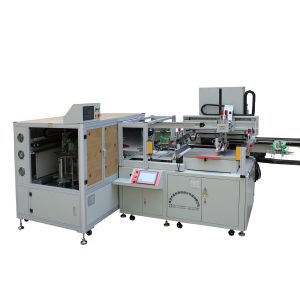screen printing machines troubleshooting
screen printing machines troubleshooting
There are always various malfunctions in the screen printing machine during the printing process, such as manual and semi-automatic not working, the power light is on, the printing base does not work after moving to the left, и так далее.

1: Act immediately without stepping on the foot switch in semi-automatic mode
Most of the causes of this kind of failure are that the foot switch is damaged or water enters the foot switch socket, causing a short circuit. The other is that there is a problem with the manual start button switch. The repair method is to replace new switches, sockets, button switches or disassemble and repair related damaged parts.
2. During semi-automatic operation, step on the foot switch and the slide seat will go down, and then go up again after releasing it.
This phenomenon is usually caused by the proximity switch on the left side of the horizontal sliding seat being damaged or disconnected. The solution is to replace the proximity switch or connect the switch connection.
3. During semi-automatic operation, step on the foot switch to lower the vertical slide seat, and the printing seat will stop moving after it moves to the left.
The reason for this failure is that the proximity switch on the left side of the horizontal sliding seat is not sensed or there is a problem.
The solution is to adjust the left proximity switch sensing point or replace the proximity switch; the micro switch in the foot switch is stuck and does not move, which can also cause this fault. The solution is to adjust, repair or replace the micro switch in the foot switch with a new one.
4. When working semi-automatically, step on the foot switch, and the sliding seat will move down to the left and then up but not to the right.
This phenomenon occurs because the proximity switch on the upper left side of the vertical slide seat is not sensed or there is a problem with the proximity switch. The solution is to adjust the proximity switch sensing above or a better proximity switch.
5. After the action switch, the rising action is half a beat slower.
This type of fault is that the control solenoid valve is blocked by foreign matter or the solenoid valve is faulty. The solution is to remove the solenoid valve and clean it or replace it with a good one.
6. Both manual and semi-automatic operation are inactive, and the power light is on.
The causes of such failures include blown low-voltage side fuse, no air source entering, and all solenoid valves being faulty. The solution is to replace the low-voltage side fuse and check whether the pressure reaches 4-7kg/cm. All the solenoid valve faults are very small, most likely due to broken connections.
7. Automatic and semi-automatic start will not drop.
This type of failure occurs when the proximity switch on the right side of the horizontal sliding seat is faulty or not sensed, the selector switch is faulty, or the single-action switch interlocking point is damaged. The solution is to adjust the proximity switch induction or replace the right proximity switch, and replace or repair the selector switch and single-action switch.
8. Automatically cannot be started.
This type of fault is that the micro-branch switches of the upper and lower cylinders are normally closed, the contacts cannot be connected or the timer is damaged. The solution is to repair the micro-switch or replace the timer.
9. The work surface does not absorb air.
The cause of this type of failure is that the suction motor is burned out. The contactor that controls the operation of the motor is damaged and the suction motor rotates, but the solenoid valve controlling the suction is faulty or the suction selector switch is faulty. The solution is to repair or replace it.
10. The vertical slide rises slowly.
The cause of this type of failure is that the vertical slide bearing has no oil or the cylinder piston is worn, and the magnetic collision causes the axis to bend. The solution is to replenish oil, change the piston password, and adjust the axis slowly.
 Трафаретная печатная машина
Трафаретная печатная машина